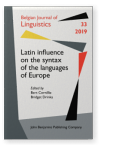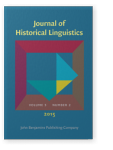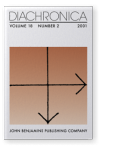Andrii Danylenko
List of John Benjamins publications for which Andrii Danylenko plays a role.
2020 On the grammaticalization of the -(v)ši- resultative in North Slavic Historical Linguistics 2017: Selected papers from the 23rd International Conference on Historical Linguistics, San Antonio, Texas, 31 July – 4 August 2017, Drinka, Bridget (ed.), pp. 293–316 | Chapter
It is commonly accepted that the -(v)ši- resultatives in North Slavic are a product of the areal diffusion of a similar resultative formation in -vęs- (< *-ṷes-) from Baltic. The author argues that the anterior grammaticalization of the -(v)ši- resultative in North Slavic has been largely an… read more
2019 Do the parallels meet? On the origin of the accusative with infinitive construction in Slavic Latin influence on the syntax of the languages of Europe, Cornillie, Bert and Bridget Drinka (eds.), pp. 150–182 | Article
The paper is concerned with the origin and the development of the Accusative with Infinitive (AcI) construction in Slavic. Looking into the areal-typological, diachronic, and socio-typological parameters of the AcI construction, the author introduces new Slavic dialectal and comparative material… read more
2015 On the mechanisms of the grammaticalization of comitative and instrumental categories in Slavic Journal of Historical Linguistics 5:2, pp. 267–296 | Article
This article critically assesses probabilistic predictions on the theory of contact-induced grammaticalization of the comitative-instrumental polysemy in those Slavic languages which have had a history of long and intense interaction with either German or Italian. Having provided extensive… read more
2001 Russian čto za , Ukrainian ščo za , Polish co za “was für ein”: A case of contact-induced or parallel change? Diachronica 18:2, pp. 241–265 | Article
Summary This paper presents a historical and typological interpretation of Slavic constructions of the type Ru čto za, Po co za, and the like, traditionally regarded as syntactic calques of the German was für. Basing his arguments on cross-linguistic and diachronic data, the author asserts that… read more



